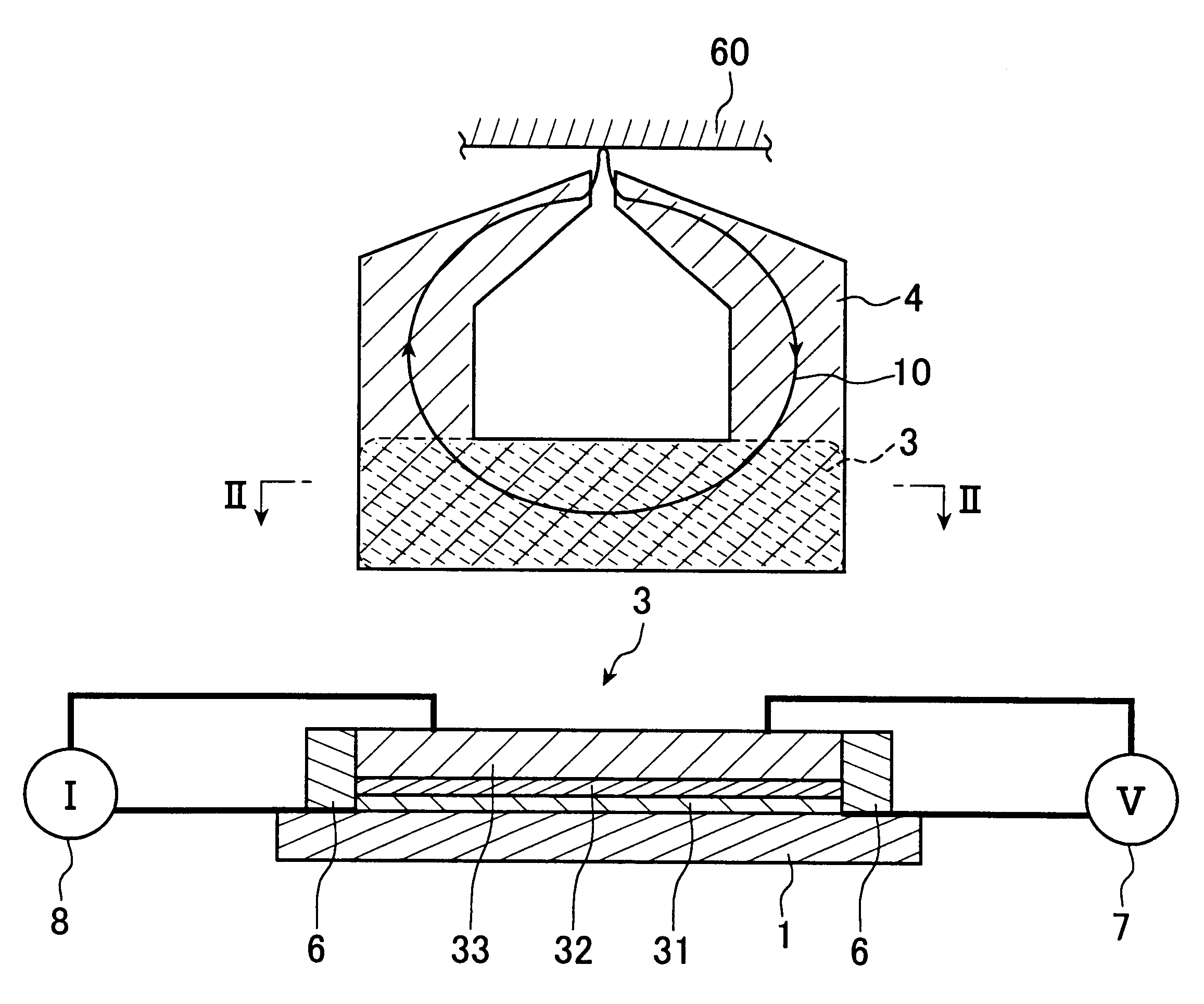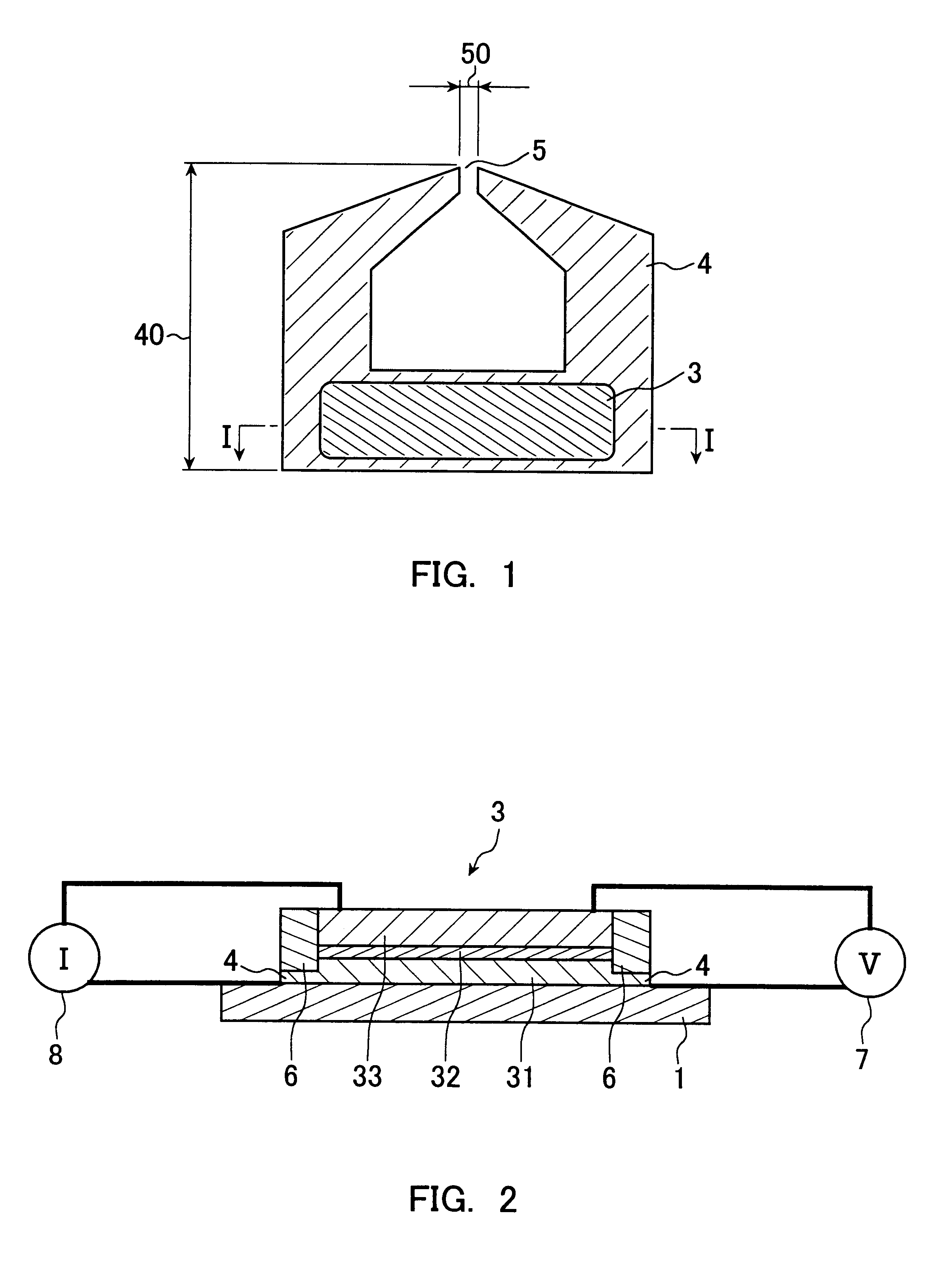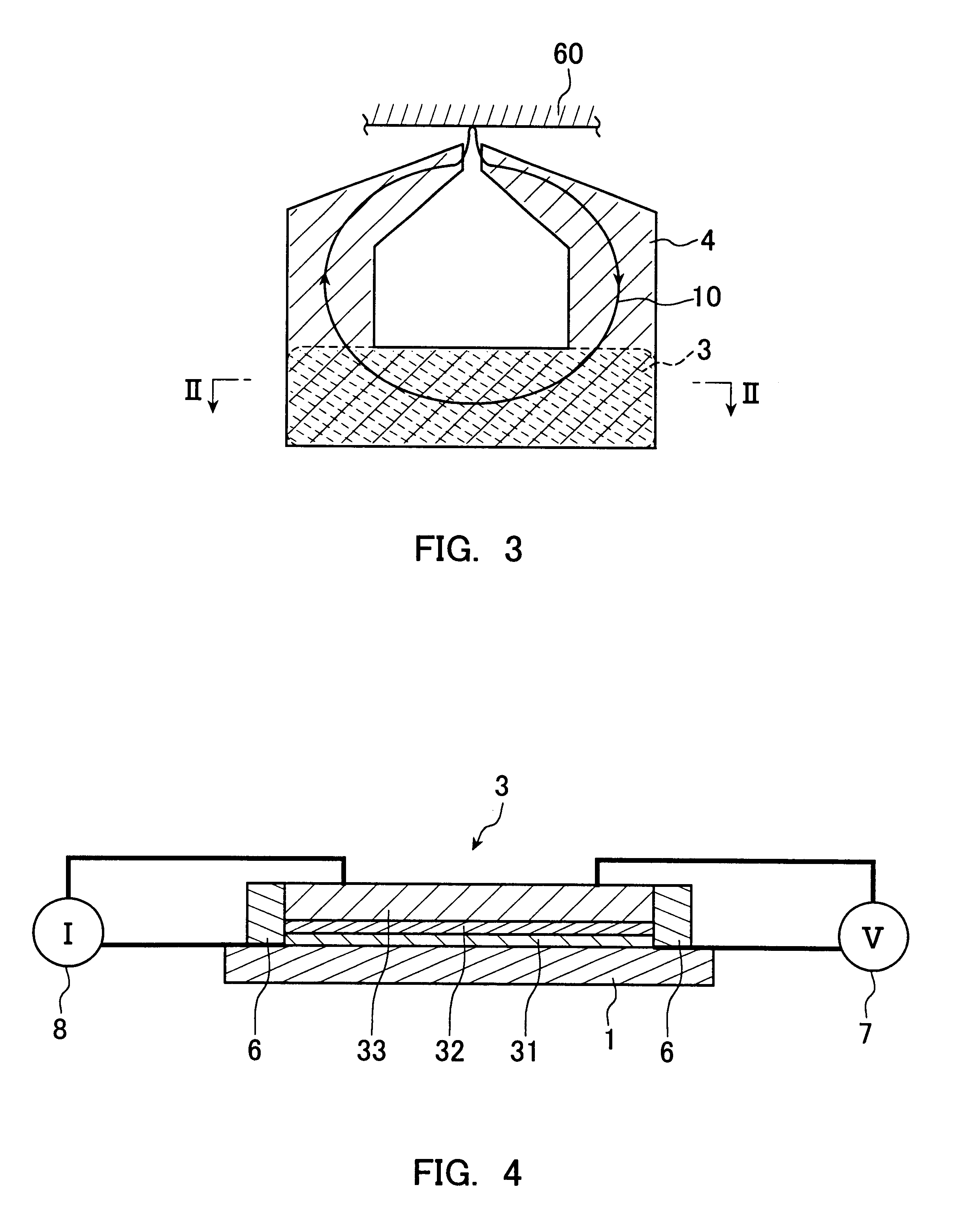Magnetic head comprising a multilayer magnetoresistive device and a yoke for introducing magnetic flux from a medium to the magnetoresistive device
a multi-layer magnetoresistive device and magnetoresistive device technology, applied in the field of magnet head, can solve the problems of increasing the device resistance and the compactness of the device, and achieve the effect of improving the magnetic field
- Summary
- Abstract
- Description
- Claims
- Application Information
AI Technical Summary
Benefits of technology
Problems solved by technology
Method used
Image
Examples
example 1
A magnetic head is produced having the same structure as that shown in FIGS. 1 and 2. In this magnetic head, a magnetoresistive device is formed on a yoke.
Using RF magnetron sputtering, Ta(3) / Cu(100) / Ta(3) / NiFe (20) / Al(0.4) were formed in this order on an AlTiC plate as a substrate. The Cu layer is a lower electrode. The NiFe layer is a first magnetic layer as a free layer. The Ta layer is an underlying layer. The values in parentheses indicate the thickness (unit nm; this applies to the following).
Then, after the Al was oxidized in an oxygen atmosphere of 200 Torr for 1 minute, an Al (0.3) film was formed thereon. Furthermore, this Al was oxidized in an oxygen atmosphere with 200 Torr for 1 minute. Thus, an Al oxide film (alumina) was formed as the non-magnetic layer.
Then, Co.sub.90 Fe.sub.10 (3) / Ru(0.7) / Co.sub.90 Fe.sub.10 (4) / PtMn(30) / Ta(3) were formed into films in this order. The Co.sub.90 Fe.sub.10 (3) / Ru(0.7) / Co.sub.90 Fe.sub.10 (4) / PtMn(30) was the second magnetic layer as t...
example 2
As in Example 1, a magnetic head having the same structure as shown in FIGS. 1 and 2 was produced. In this example, the MR ratio was examined with the ratio of the device cross-section area to the yoke area kept constant at 30% or more and the yoke height varied, in the same manner as in Example 1.
As shown in Table 4, the results indicate that when the ratio of the device cross-section area to the yoke area is 30% or more and the yoke height is 10 .mu.m or less, more excellent reading characteristics can be obtained.
example 3
A magnetic head having the same structure as shown in FIGS. 9 and 10 was produced. In this magnetic head, the yoke is formed on the magnetoresistive device. Hereinafter, a production method will be described with reference to FIG. 11.
First, Ta(3) / Cu(500) / Ta(3) / PtMn(30) / CoFe(3) / Ru(0.7) / CoFe(3) / Al(0.4;1 min. oxidation with pure oxygen with 260 Torr) / Al(0.3;1 min. oxidation with pure oxygen with 260 Torr) / CoFe(3) / NiFe(30) / Ta(3) were formed in this order on an AlTiC plate as a substrate 1, and annealed at 260.degree. C. for 2 hours (FIG. 11A). The Cu layer was a lower electrode, and PtMn(30) / CoFe(3) / Ru(0.7) / CoFe(3) was the first magnetic layer 31 as the pinned layer. The Al oxide film was the non-magnetic layer 32. The CoFe(3) / NiFe(30) was the second magnetic layer 33 as the free layer.
When a voltage was applied to these layers from a cross electrode of 3.times.3 .mu.m.sup.2, the MR curve shown in FIG. 26 was obtained, and the junction resistance was 25 .OMEGA..multidot..mu.m.sup.2.
Then...
PUM
| Property | Measurement | Unit |
|---|---|---|
| height | aaaaa | aaaaa |
| area | aaaaa | aaaaa |
| thickness | aaaaa | aaaaa |
Abstract
Description
Claims
Application Information
 Login to View More
Login to View More - R&D
- Intellectual Property
- Life Sciences
- Materials
- Tech Scout
- Unparalleled Data Quality
- Higher Quality Content
- 60% Fewer Hallucinations
Browse by: Latest US Patents, China's latest patents, Technical Efficacy Thesaurus, Application Domain, Technology Topic, Popular Technical Reports.
© 2025 PatSnap. All rights reserved.Legal|Privacy policy|Modern Slavery Act Transparency Statement|Sitemap|About US| Contact US: help@patsnap.com



